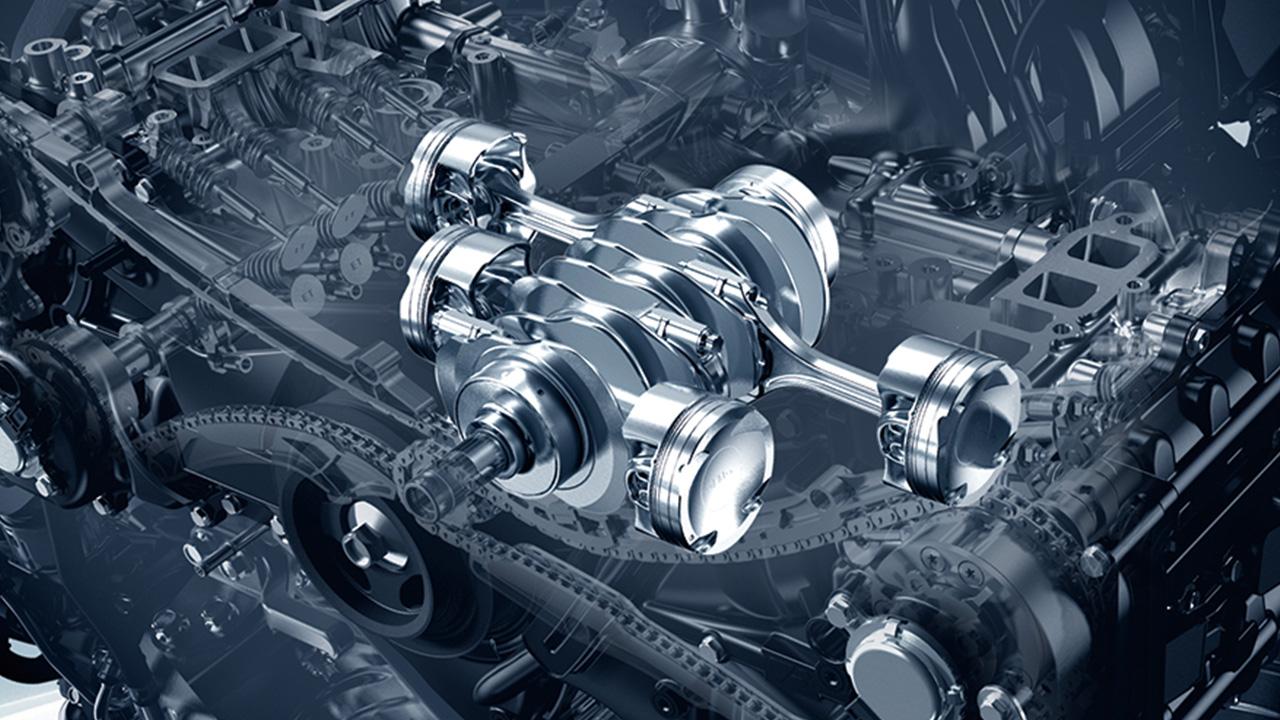
Engine sounds enchant car enthusiasts. But how does the shape of an engine affect its tone? For the second article in this series, we asked two engineers about the horizontally-opposed engines that deliver their beloved boxer sound.

Why is Toyota Times writing about Subaru?
Boxer sound? Isn’t that a Subaru thing?
That’s right—this time we’re shining the spotlight on Subaru’s horizontally-opposed engines.
In May 2024, three carmakers—Subaru, Mazda, and Toyota—held a joint workshop on new engine development for the electrification era.
Toyota’s relationship with Subaru has deepened since the pair’s 2005 collaboration agreement, leading to a new business and capital alliance in 2019. Tomomi Nakamura and Akio Toyoda, the companies’ presidents at the time, continued to push the partnership forward by visiting the front lines where each side pursued ever better carmaking.
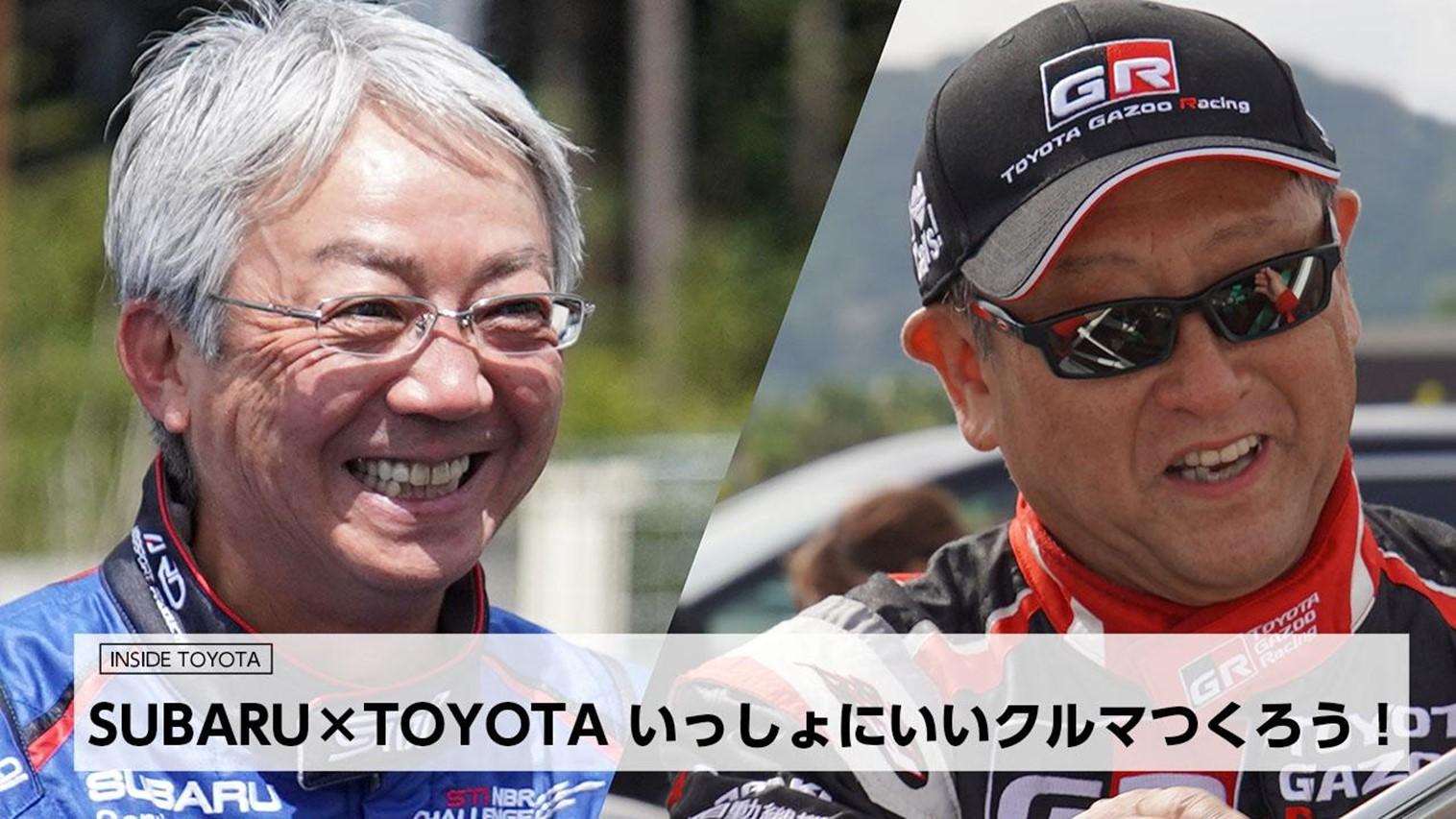
As Chairman Toyoda notes in a video on Subaru’s official website, for many, the name Subaru is synonymous with horizontally-opposed engines.
At the joint workshop in May, Subaru President Atsushi Osaki vowed to “continue honing horizontally-opposed engines (in the carbon neutral era).”
What gives these engines their rumbling, thumping boxer sound? We asked Subaru to help unravel the secret behind the tones that captivate car lovers of all stripes.
Does the shape of an engine change its sound?
We had the chance to speak with Nobuyoshi Takashima, who works on air intake systems in Subaru’s Engine System Design Section No.1 (Powertrain Design Department, Engineering Division), and Jun Hirano, who has been designing engines throughout his two decades at the company and is now a Project General Manager at the Vehicle Environmental Development Department (Engineering Division), which is tasked with formulating future emissions strategies. Both helped design the engine for the first-generation BRZ.
First, what makes horizontally-opposed engines unique, and what is their distinctive boxer sound?
Hirano
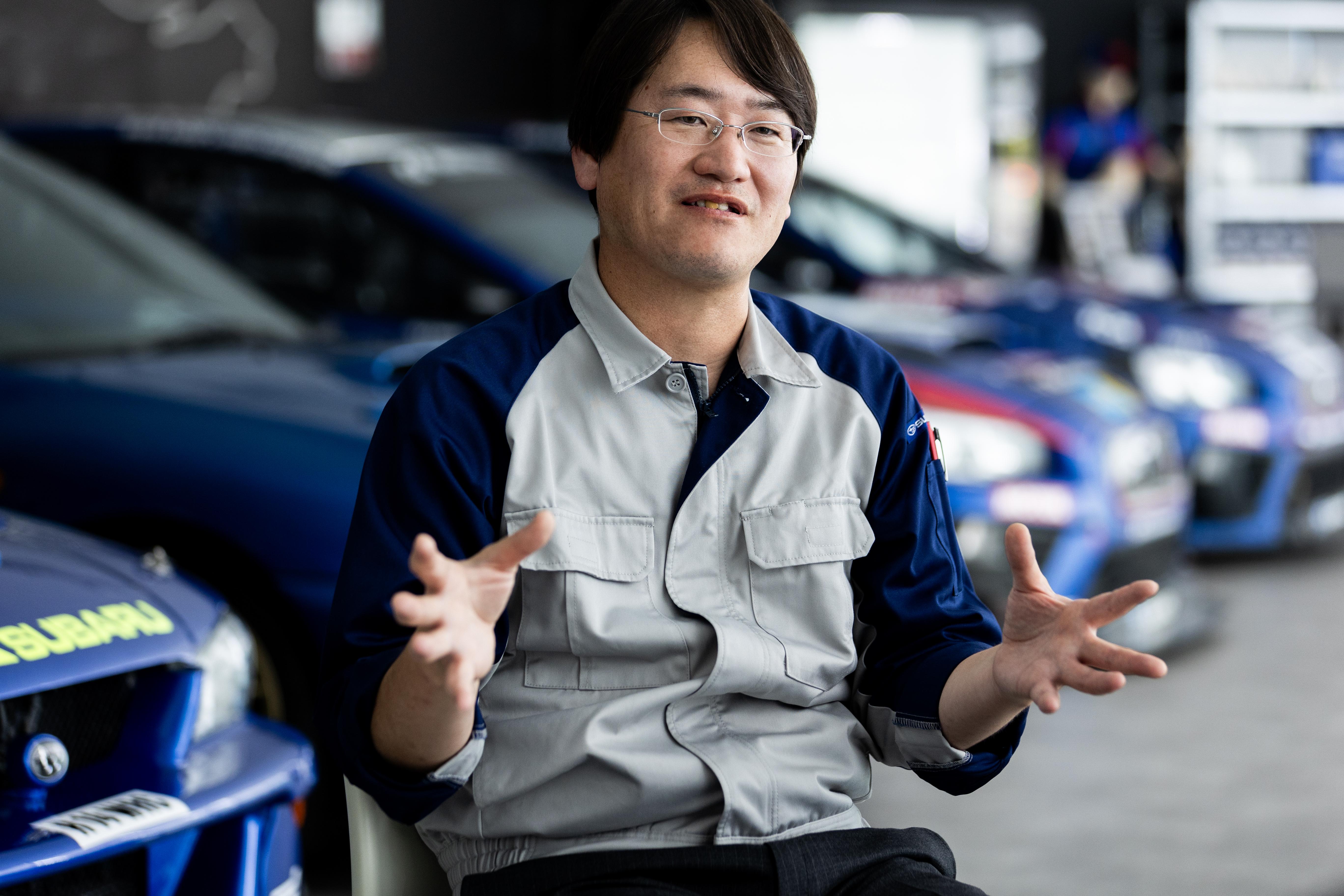
Unlike regular inline engines where the pistons move vertically, in horizontally-opposed engines they move side-to-side, in such a way that they cancel out each other’s vibrations. This means less vibration overall, and less vibration-related noise when the engine is running.
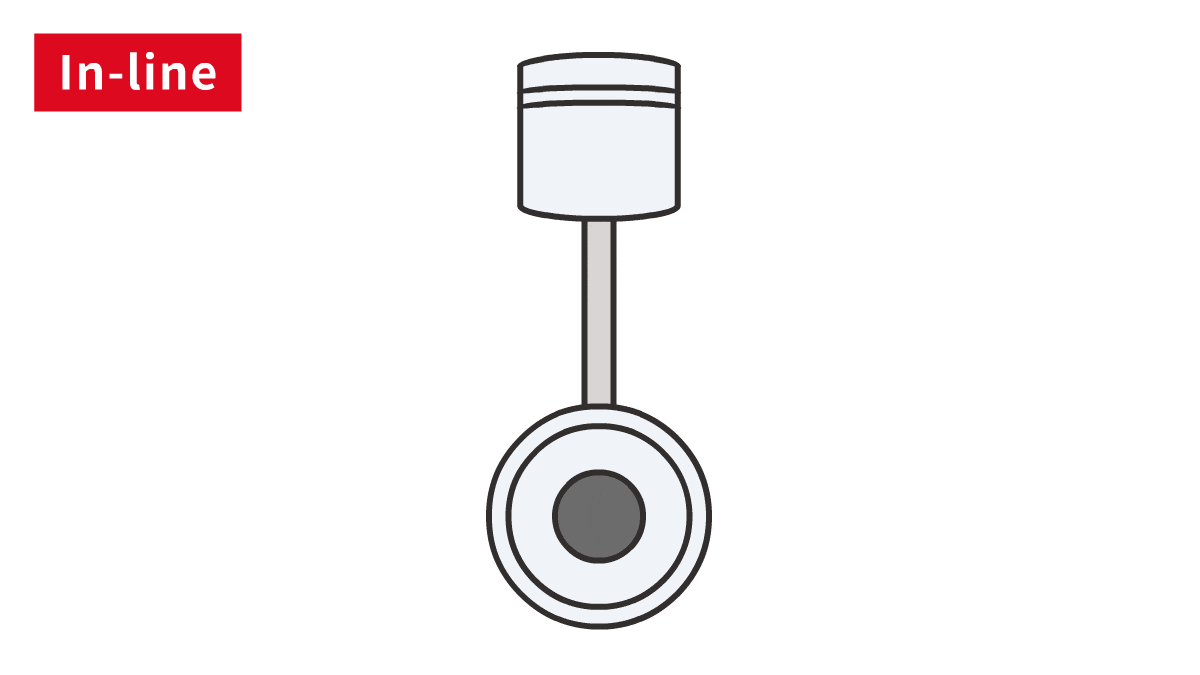
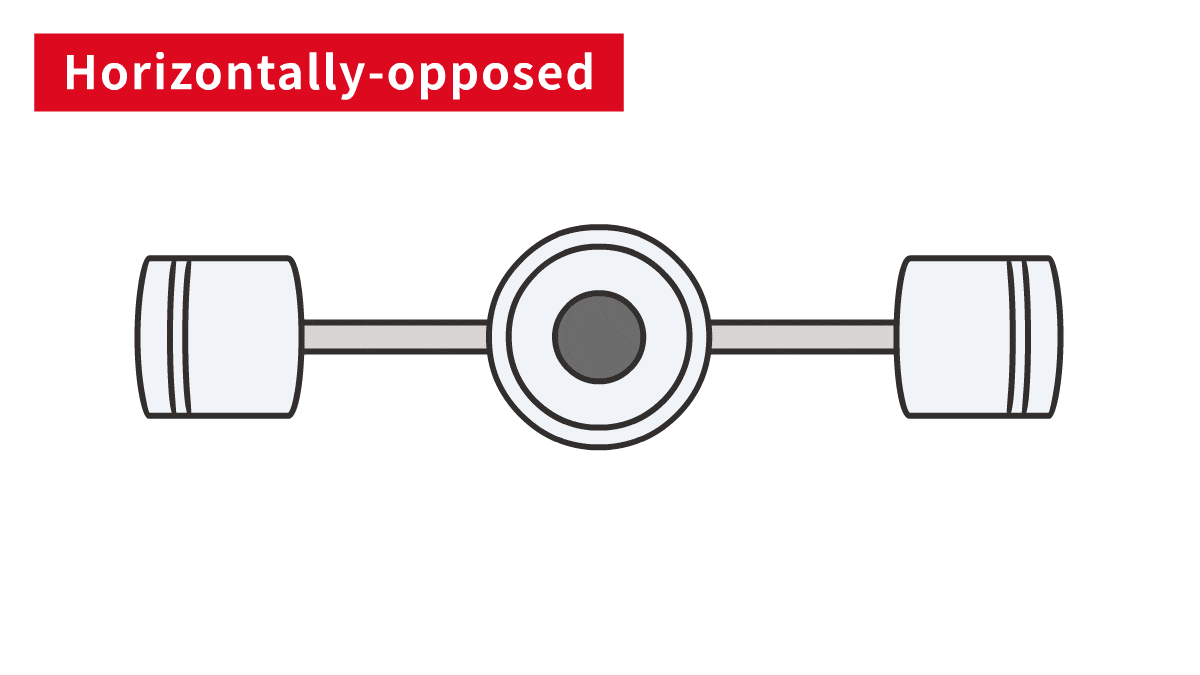
Particularly in the 90s, our cars had a real “throbbing” sound which many people came to regard as the boxer sound.
So, what goes into producing this boxer sound?
Let’s start by explaining how things work with the inline four-cylinder engines found in many cars. The four cylinders create four explosions, with the resulting exhaust gases from each cylinder traveling along pipes of equal length. This means that exhaust gases are emitted at regular intervals, creating the engine sound we all know.
(For an explanation of how this combustion process works, check our first article in this series.)
Meanwhile, in a horizontally-opposed engine, the pipes running from each cylinder (front exhaust pipe in the diagram below) differ in length, meaning the gases arrive at the convergence point at different times, interfering with each other in the process.
This difference in timing means that what should have been four separate exhaust gases from four explosions can be imagined as a single combined exhaust coming out of the muffler at once. (Strictly speaking, the four produce more than a single sound, but we’ll envision it this way for our purpose.) The result is a steady throb that is also louder than an inline engine.
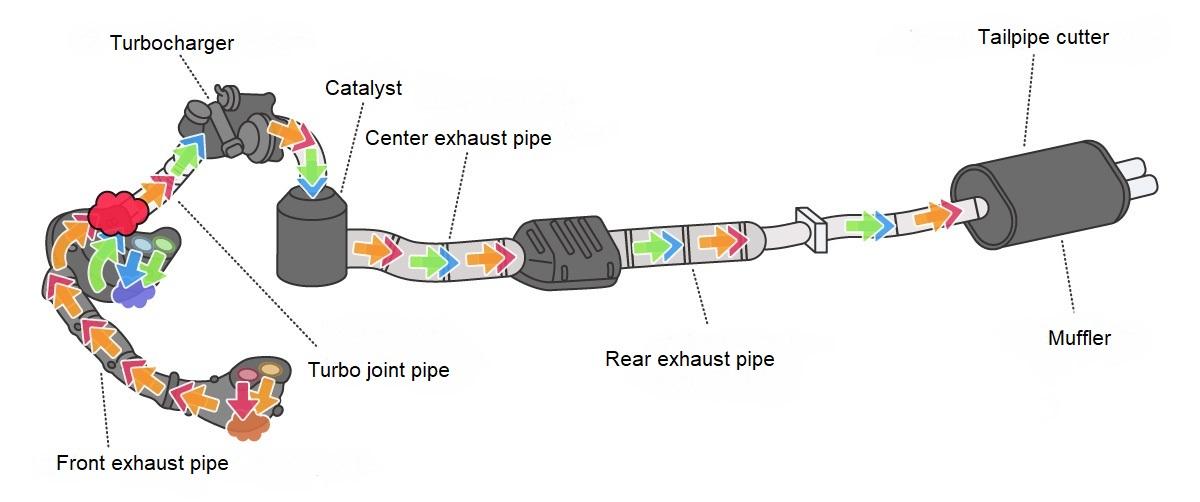
The exhaust gas interference is caused by exhaust manifolds (pipes) of unequal length. When the piping was made uniform during updates to the 2003 fourth-generation Legacy and the second-generation Impreza, 1990s boxer sound aficionados lamented the loss of the iconic rumble.
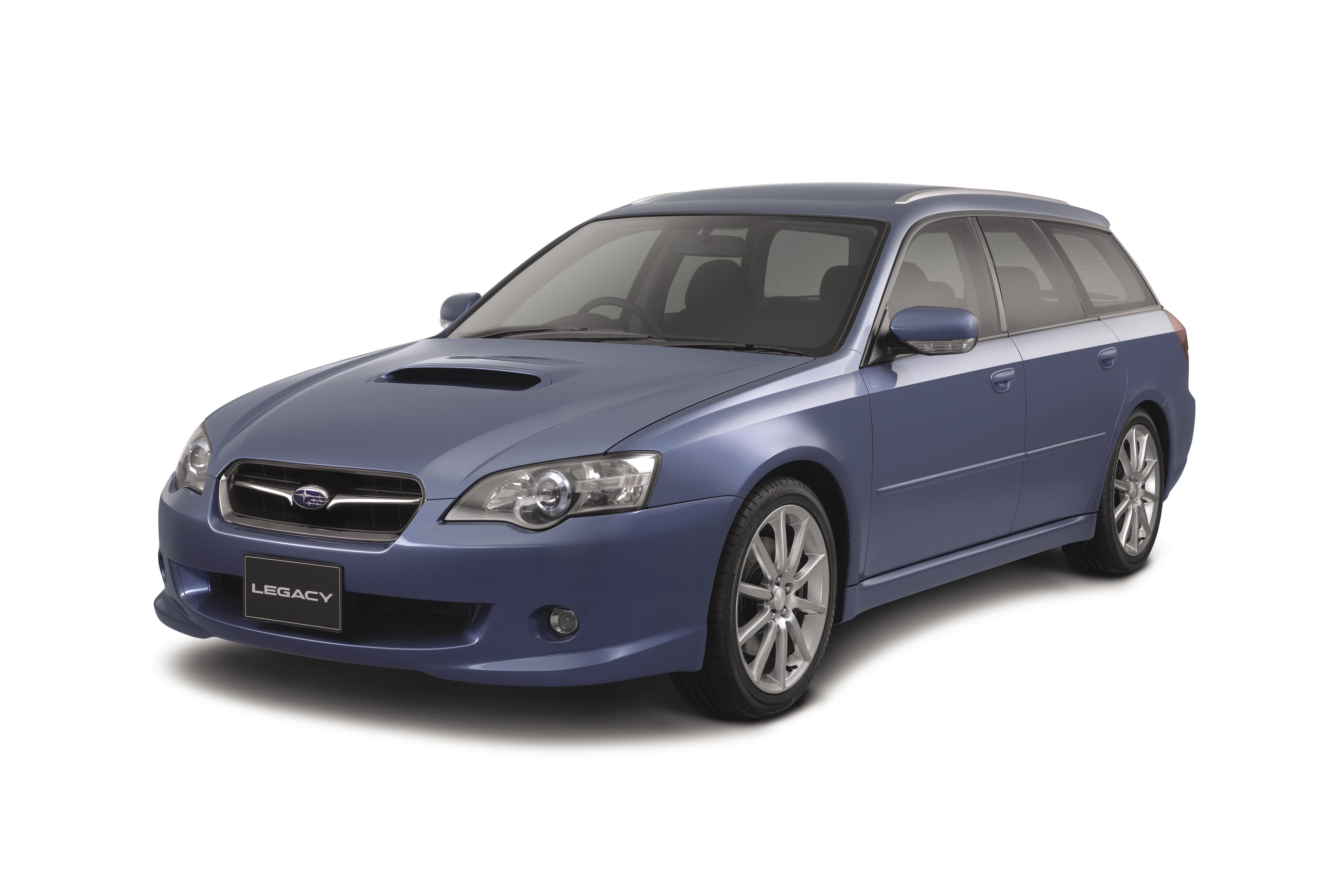
“From the original Leone to the Legacy, Impreza, and Forester, we always used the unequal-length layout, but for the fourth-generation Legacy and the second-generation Impreza, we changed to a uniform length to create a more powerful engine with better response,” explains Hirano. “In doing so, we lost the distinctive sound.”
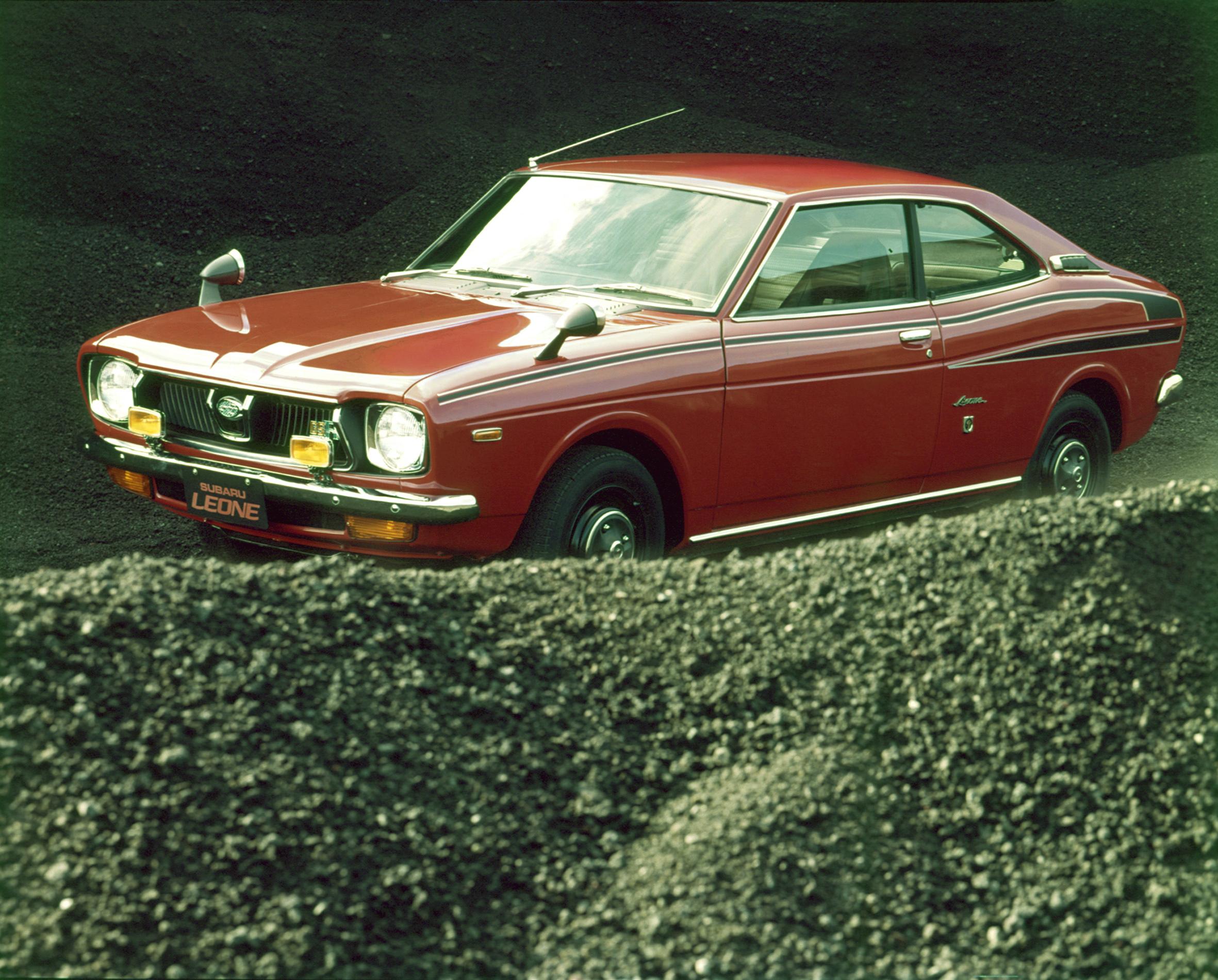
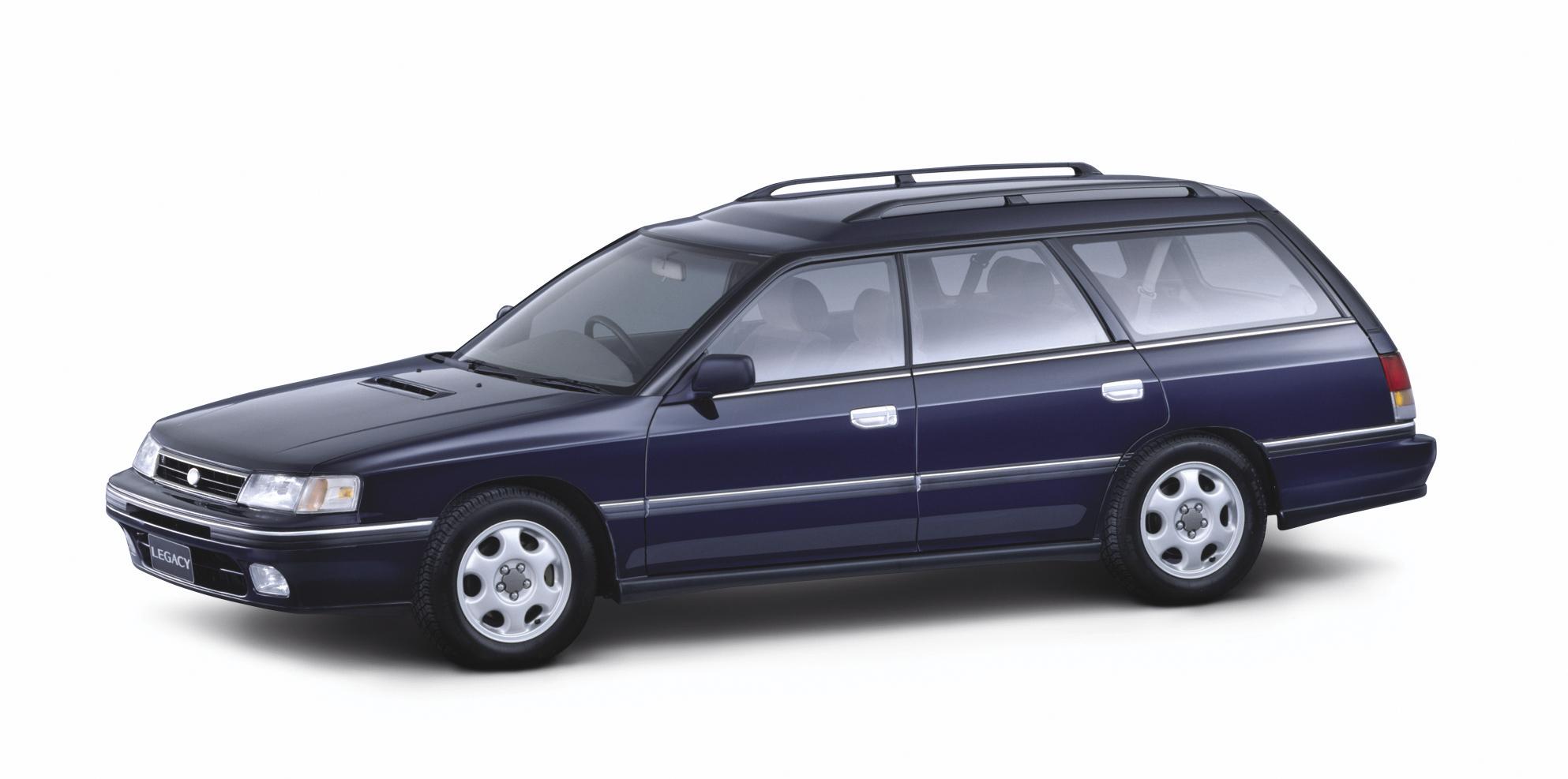
However, this was the best option, given the regulations at that time. Later, with fuel efficiency, exhaust gas, and noise standards set to continue getting stricter, Subaru again returned to an unequal-length configuration, with the CB18 engine.
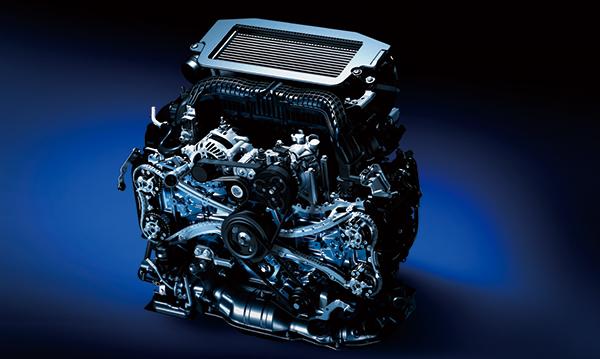
Hirano
In developing the CB18, we were determined to achieve better response, with the turbocharger kicking in faster, while also improving exhaust gas performance.
Horizontally-opposed engines emit exhaust gases separately on the left and right sides, with a distance of around 500 mm between these points.
The turbocharger is positioned where the two sides come together, but instead of placing it dead center at 250 mm, we gave the left and right pipes different lengths, one a little over 100 mm and the other at 350 or 400 mm. As a result, the turbo spins faster.
In addition, the catalyst that cleans exhaust gases can also be placed close to the engine, which is why we chose this as the optimum layout.
In the CB18, combustion occurs in the following order: right bank cylinder 1 (#1), cylinder 3 (#3), left bank cylinder 2 (#2), cylinder 4 (#4). The turbocharger is placed directly under #1 and #3, which fire first, with the pipes from both sides—the right short, left long—coming together at its inlet.
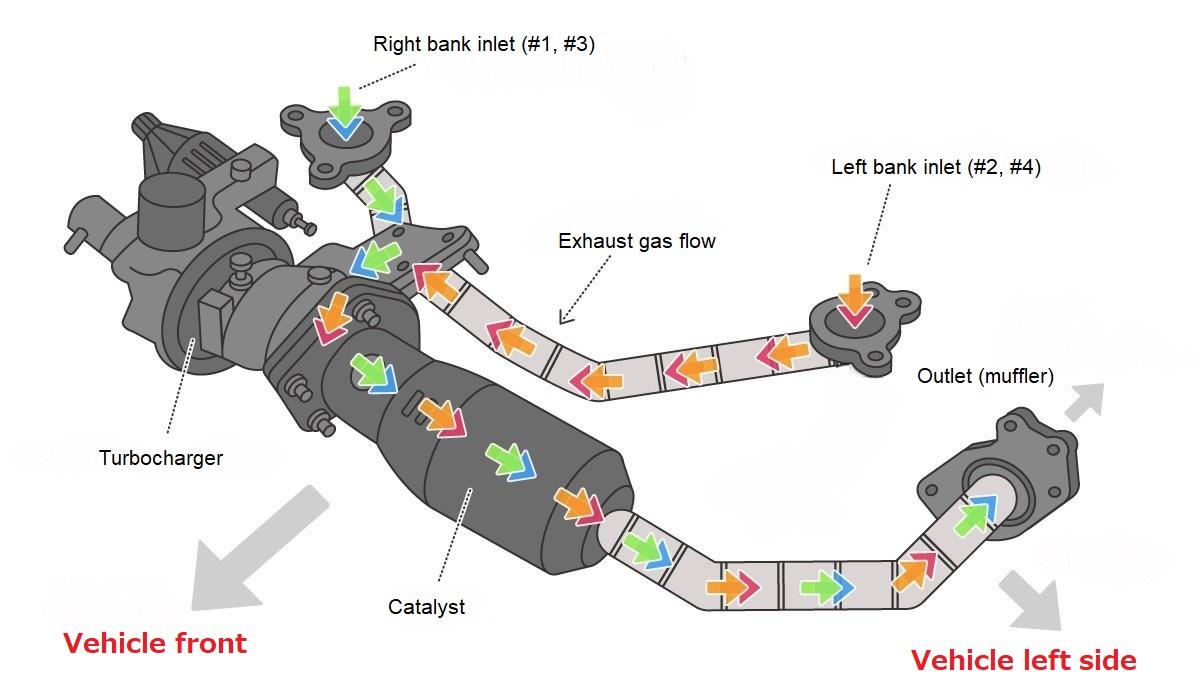
When this engine made its debut in the 2020 second-generation Levorg, excited fans cheered the return of the boxer sound.
Despite that, Hirano says the muffler and other noise reduction measures make the sound barely noticeable to the average customer. Even so, he adds, “Personally, I wanted to keep the boxer sound, and ultimately we were able to do so in mass production.”
The key was a sports muffler by STI*.
*Subaru Tecnica International, the tuning factory that underpins Subaru’s racing activities and also develops parts.
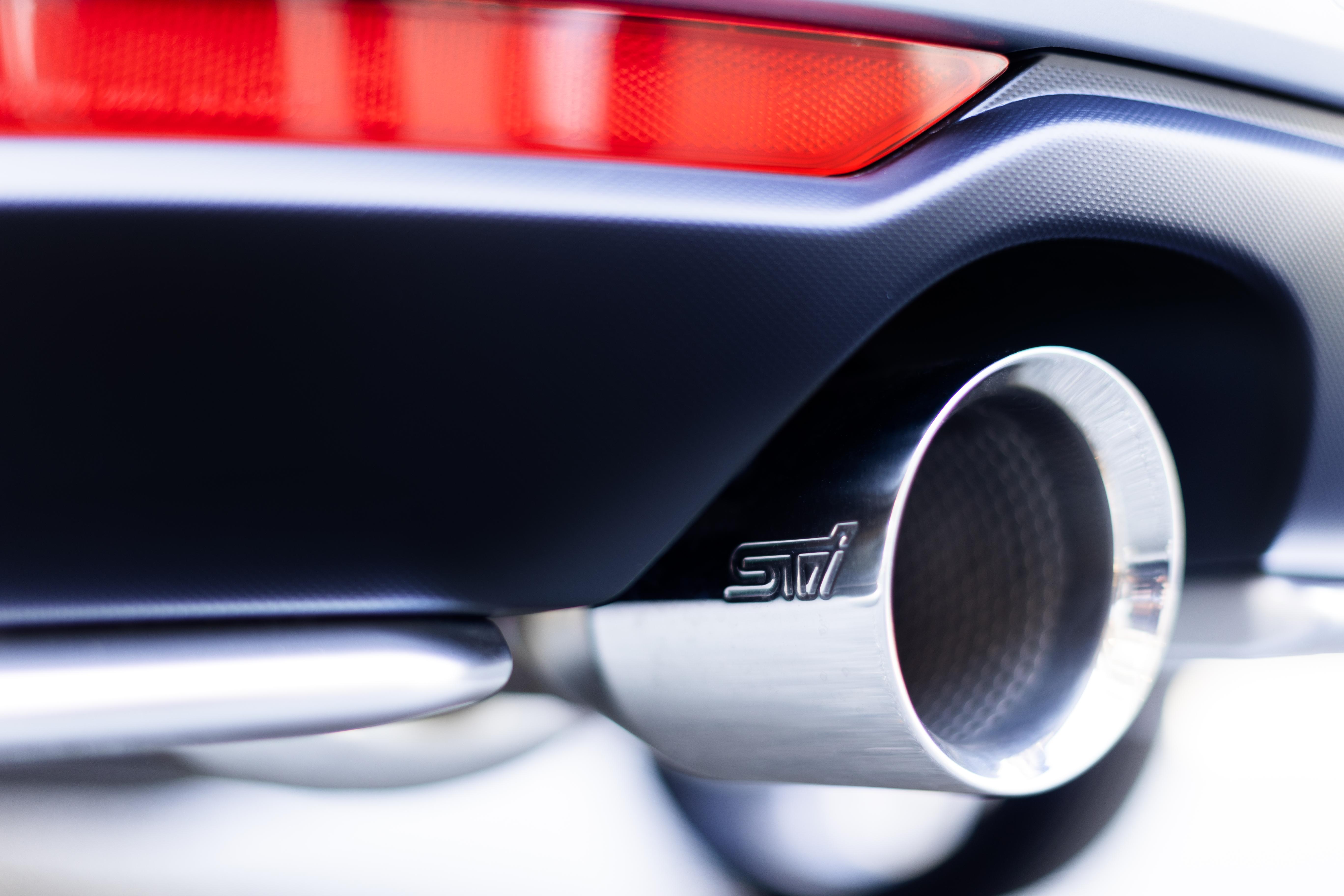
Hirano
We were confident that STI would build us a sports muffler, so we designed the layout to restore the boxer sound and delight those customers who opted for the aftermarket part.
“Today’s strict regulations force us to make factory models as quiet as possible,” says Takashima with a touch of regret. He fondly recalls working with Hirano to create the sound for the first-generation BRZ.
Takashima
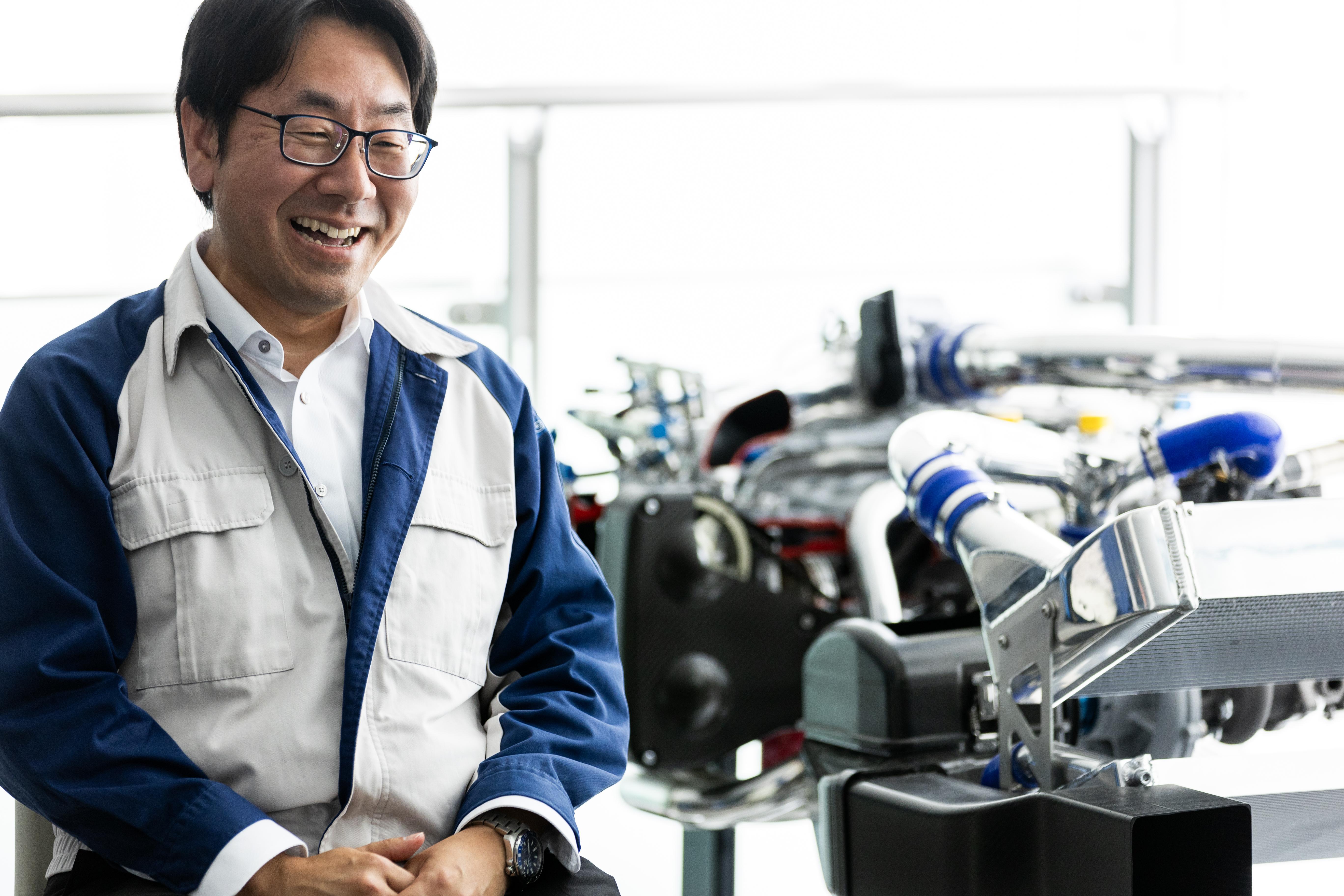
We were told we could make a sports car, designing the intake and exhaust however we liked. It was fun.
Our concept was to create sounds that would deliver a more exhilarating experience for the driver, and in development, we focused on three areas: directness, expansiveness, and response.
For the first-generation BRZ, we created an expansive sound inside the car by harmonizing the rumble of the exhaust system behind the driver with the air intake system in front.
To achieve this, we added a Sound Creator®* system, which delivers intake sounds into the cabin. Though the component is roughly the size of a fist, fitting it inside the engine bay was a real struggle.
*Sound Creator® is a registered trademark of MAHLE Filter Systems Japan Corp. The system deliberately brings the engine’s air intake sounds into the vehicle, accentuating the sound during acceleration.
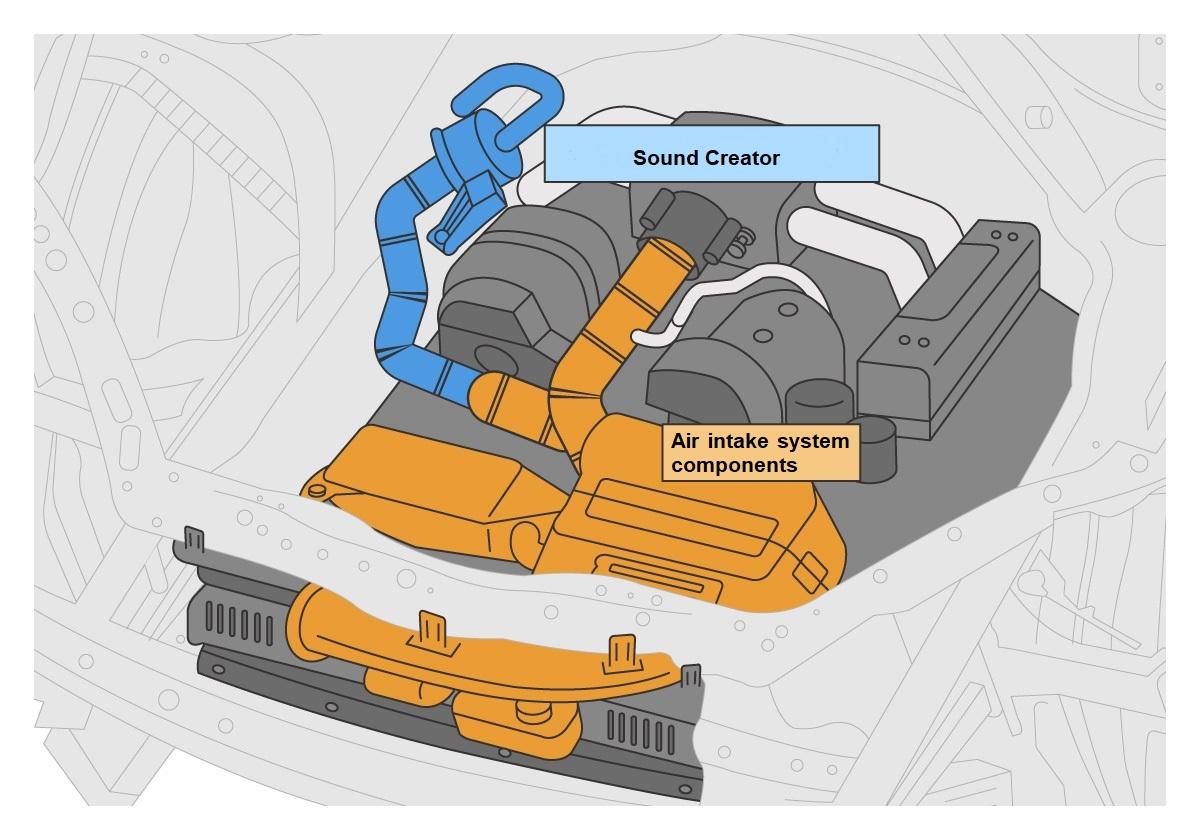
Eager to incorporate the device, Takashima raised the idea with Hirano, who was designing the engine but was initially turned down. Undaunted, Takashima kept trying to persuade Hirano and other project members that the sound would be worth the effort.
Takashima
I built a prototype, called them to the test track, and said, “Jump in and hear for yourself!” That brought everyone on board.
Hirano
Yes, you shoved us on board (laughs). We also squabbled about the intake and exhaust sides, but it was good fun.
Takashima
It really was.
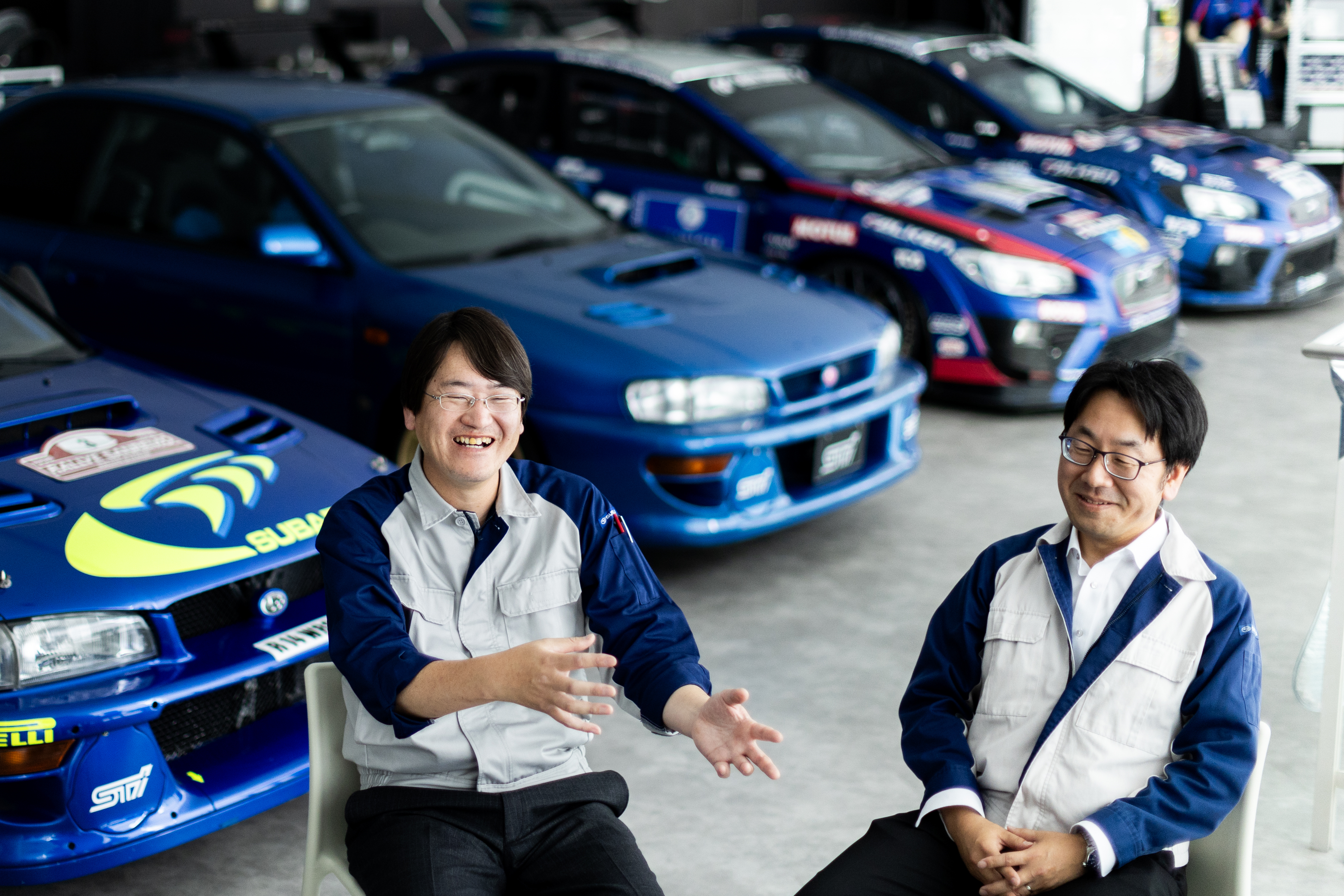
The team continued to discuss, test, and refine the Sound Creator’s placement and performance aspects—such as which frequency bands to emphasize and by how much—until everyone was satisfied.
Given all this effort, the BRZ may seem like the first model to receive such elaborate sound design, but for Hirano, it started with the fourth-generation Legacy.
Hirano
Subaru cars always had that same rumble and engine packaging, but when we decided to shift to uniform manifolds for the first time with the fourth-generation Legacy, we were really dedicated to creating a new Subaru sound.
Takashima
When I climbed in and turned on the engine, I distinctly remember the excitement of hearing that new Subaru sound, different from the throb that had come before.
When asked to pick their personal favorite-sounding models, Hirano responded with: “For me, it has always been the original Impreza turbo. Hearing that incredible growl when I was in junior high is what brought me here today.”
“I have two,” replied Takashima. “One is the third-generation Legacy GT-B, the first car I bought after joining Subaru. I will never forget the thrill of getting behind the wheel and hearing that boxer sound for the first time. The other one would have to be the first-generation BRZ.”
The boxer sound appears to be safely in the hands of truly appreciative Subaru fans.
After all this talk of boxer engines, we couldn’t leave without listening to the real thing.
Check out the links below to compare the boxer sounds of a regular Layback and one fitted with an STI sports muffler.
And for those who just can’t get enough of the boxer sound:

